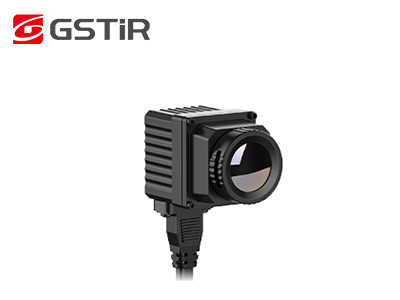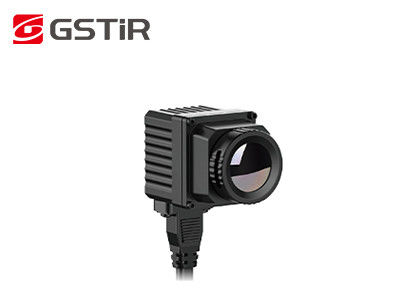-
Thermal Camera Core
-
Thermal Security Camera
-
Drone Thermal Camera
-
EO IR Systems
-
Thermal Imaging Binoculars
-
Infrared Thermal Camera Module
-
High Resolution Thermal Camera Module
-
Cooled Infrared Detectors
-
Optical Gas Imaging
-
Thermal Camera For Fever Detection
-
Cooled Camera Modules
-
Vehicle Mounted Thermal Camera
-
Integrated Dewar Cooler Assembly
-
Uncooled Infrared Detectors
384x288 17μM Vehicle Mounted Thermal Camera With Intelligent Alarm

Contact me for free samples and coupons.
Whatsapp:0086 18588475571
Wechat: 0086 18588475571
Skype: sales10@aixton.com
If you have any concern, we provide 24-hour online help.
x| Resolution | 384x288/17μm | NETD | <50mK |
|---|---|---|---|
| Spectral Range | 8~14μm | Field Of View | 37°x28° |
| Highlight | 17uM Vehicle Mounted Thermal Camera,384x288 Vehicle Thermal Camera,Intelligent Alarm Thermal Camera |
||
384x288 / 17μm Vehicle Mounted Infrared Thermal Camera with Thermal Imaging, Intelligent Alarm
N-Driver384S vehicle-mounted infrared module integrates a self-developed 384x288 / 17μm uncooled LWIR detector by Global Sensor Technology (GST).
By equipped with this thermal camera module, drivers will obtain clear road information at any time according to the thermal imaging without the interference of vehicles' headlights ahead or harsh weather. It also provides intelligent alarm to give warning in advance so that serious traffic accidents will be avioded.
Until now, we have provided our customers with various mature and stable infrared thermal imaging solutions.
- Wide Observation Field of View
- Intelligent Alarm System
- All-weather Application
- High Speed Data Transmission
- High Reliability & Stability
|
Model |
N-Driver 384S |
|
IR Detector Performance |
|
|
Resolution |
384x288 |
|
Pixel Pitch |
17μm |
|
Spectral Range |
8~14μm |
|
NETD |
<50mk |
|
Image Display Performance |
|
|
Focal Length |
9.7mm |
|
Field of View |
37°×28° |
|
Video Output Format |
FPD-Link Ⅲ |
|
Output Image Frame Rate & Resolution |
DV 384x288@50Hz |
|
System Features |
|
|
Start-up Time |
≤8s (Room Temperature) |
|
Heater |
When the Window Temperature is Lower than 2°C±2°C, Start Heating by Itself |
|
Compensation Algorithm |
Automatic Shutter Compensation |
|
Image Algorithm |
Automatic Brightness Contrast/Image Enhancement |
|
Communication Interface |
RS232, Baud rate: 115200bps |
|
Pedestrian / Vehicle Detection |
Pedestrian & Vehicle Detection (With Algorithm Control Box) |
|
Electrical Features |
|
|
Supply Voltage |
DC8V±0.5V |
|
Overall Power Consumption |
≤2W@8V Power Supply, Window Heating is off |
|
Operating Range |
|
|
Observe Range |
Person: 1.8m×0.5m ≥150m |
|
Detect Range |
Person ≥80m |
|
External Cable Connection |
|
|
Cable Length |
4m |
|
Standard External Interface |
Power Supply+Video+Serial Port: LKX 06003M-D-1 (HSD LVDS4+2P Assembly Straight Head) |
|
Physical Characteristics |
|
|
Dimension (mm) |
36.0x36.0x52.0 (Without Cable) |
|
Weight |
140g±3g (Without Cable) |
|
Environmental Characteristics |
|
|
Operation Temperature |
-40°C~ +85°C |
|
Storage Temperature |
-45°C ~ +90°C |
|
Environmental Test |
Salt Spray: ISO16750-4; Harsh Level IV |
|
Reliability Test |
Vibration: ISO16750-3, Grade A |
|
Package |
Sealed Case IP67 |
|
Certification |
|
|
EMC |
/ |
The N-driver 384S automotive thermal imaging camera is widely used in Advanced Driver Assistance System.
![]()
![]()
1. What is infrared radiation?
When talking about infrared thermal imaging, the first thing to think about is infrared radiation (IR). The wavelength of infrared radiation energy starts at about 700nm and extends to about 1mm. All objects emit a certain amount of heat in the form of infrared radiation, which is invisible to us, because in the entire electromagnetic spectrum, the naked eye can only see "visible light".
2. How does infrared thermal imager work?
The core component of the infrared equipment is the infrared thermal detector, which can sensitively detect the tiny temperature difference of the surrounding objects. Then, it collects this radiation information from the object and outputs the temperature information for imaging, which is based on the temperature difference information. The hotter the object, the more infrared radiation it produces. If the intensity is too high, you can feel it like heat.




